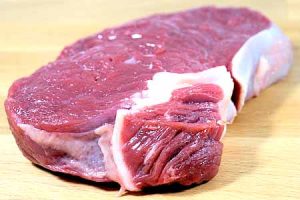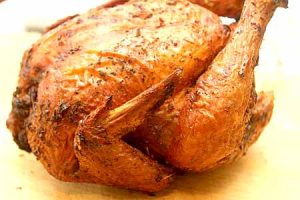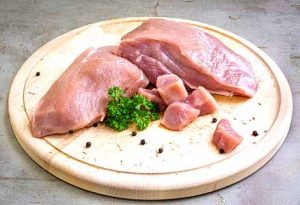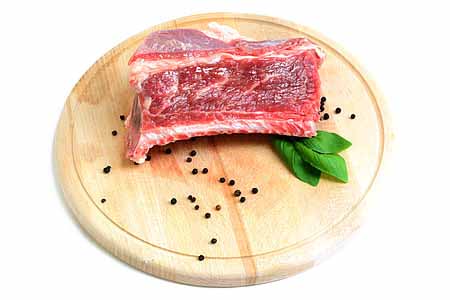According to the global statistics cholesterol continues to be a major public health issue in the United States in 2025, closely linked to the nation’s ongoing battle against heart disease—the leading cause of death. Despite decades of public health campaigns and medical advances, millions of American adults still live with high total cholesterol or dangerously low levels of HDL (“good”) cholesterol.
Another research 1 in 3 U.S. adults has high cholesterol, hiking heart disease risk by 50% (2024 CDC). Worried about red meat and cholesterol? You’re not alone. Why is red meat bad for cholesterol? Its saturated fats, TMAO, sodium, and charring can spike “bad” LDL, but smart choices let you enjoy it safely.
Mayo Clinic News questions red meat’s heart impact. They note higher odds of attacks and strokes, debating if it’s the meat or grill style. With timeless advice to enjoy sparingly, it’s empathetic and grounded. You can explore for more details.
Why Is Red Meat Bad for Cholesterol?
Why is red meat bad for cholesterol? Red meat raises LDL cholesterol through saturated fats, TMAO, dietary cholesterol, sodium in processed meats, and inflammation from cooking. Here’s why red meat and cholesterol don’t always mix (2024 Journal of the American Heart Association).
Saturated Fat: The LDL Booster
Fatty cuts (steak, ribs, ground beef, 10g fat/100g ribeye) and processed meats (bacon, sausage, hot dogs) pack saturated fat (7g/100g beef). This tells your liver to pump out LDL, forming artery plaque and raising heart disease risk. Lean cuts like sirloin (4g fat/100g) and a 70g/day limit (British Heart Foundation) ease the impact.

TMAO: The Hidden Heart Risk
Red meat’s L-carnitine turns into TMAO in your gut, linked to artery damage (2024 Circulation). Beef has 110mg carnitine/100g vs. chicken’s 30mg, making red meat and cholesterol a riskier combo.
Dietary Cholesterol: A Smaller Player
Beef contains ~70mg/100g dietary cholesterol, but it’s less impactful than saturated fat for most (2025 meta-analysis). Stick to 85g portions to minimize effects.
Processed Meats: Sodium and Trans Fats
Processed meats (bacon, sausage, hot dogs, 12g fat/100g, 1,500mg sodium/100g) load up on saturated fat, trans fats, and sodium, spiking LDL and blood pressure (2024 Hypertension).
Inflammation from Charring
High-heat cooking (charring steak, ribs) creates advanced glycation end-products (AGEs), triggering arterial inflammation and heart risk (2024 Journal of Nutrition). Baking or stewing cuts AGEs.
Red meat’s like a spicy dish: a little adds flavor, but too much heat (fat, sodium, charring) burns your heart.
Where Does All This Cholesterol Come From? (Your Liver vs. Your Plate)
Where do these cholesterol molecules originate? There are two primary sources. Understanding them is crucial for managing your levels.
Your Liver: The Main Cholesterol Factory (Your Body’s Own Production)
Surprisingly, your liver makes most of the cholesterol your body needs! It constantly produces it. This is endogenous cholestrol. Your body is, in effect, a cholesterol-making machine.
Your Food: Dietary Cholesterol (What You Eat)
Next, there’s dietary cholesterol. This comes from food. You’ll find it in animal products like red meat, poultry, fish, eggs, and dairy.
Which One Matters More? (The Key Takeaway)
For most people, your liver’s cholesterol production is influenced more by the saturated and trans fats you eat than by the actual cholesterol in your food. Therefore, while dietary cholesterol contributes, focusing on cutting those “bad” fats is usually more impactful.
Getting Your Cholesterol Numbers: The Lipid Panel Explained
You can only know your cholesterol levels through a simple blood test. This test offers a snapshot of your heart health.
What’s a Lipid Panel? (Your Cholesterol Blood Test)
A lipid panel (or lipid profile) is a routine blood test. It measures all the fats in your blood. Typically, it’s done after fasting for 9-12 hours.
What Do Your Numbers Mean? (Understanding Your Results)
Your lipid panel usually shows four key numbers:
- Total Cholesterol: This is the overall amount of cholesterol.
- LDL Cholesterol: Your “bad” cholesterol. Lower is generally better.
- HDL Cholesterol: Your “good” cholesterol. Higher is generally better.
- Triglycerides: Another fat type. Lower is usually better.
Your doctor will look at all these numbers together. They also consider factors like your age, family history, and lifestyle. This helps them assess your overall risk.
Why Regular Checks Are Super Important (Don’t Skip Them!)
High cholesterol often has no symptoms. For this reason, people call it a “silent killer.” You won’t feel it until it has caused significant damage. Therefore, regular cholesterol checks are vital. They help you catch potential problems early. This way, you can take steps to protect your heart.
Why Your Body Needs Cholesterol
Why does cholesterol matter? Cholesterol builds cells, fuels hormones, aids digestion, and makes Vitamin D. But too much “bad” LDL cholesterol from red meat and cholesterol can clog arteries, raising heart risks. Balance is key.
-
Cell Builder: Strengthens cell membranes for healthy function.
-
Hormone Maker: Powers estrogen, testosterone, and cortisol for mood and energy.
-
Digestion Helper: Forms bile acids to break down fats.
-
Vitamin D Booster: Converts sunlight into bone-strengthening Vitamin D.
Think of cholesterol as your body’s handyman—great for repairs, but too much gear clogs the pipes.
Meet the Cholesterol Crew: LDL, HDL, Triglycerides
What are LDL, HDL, and triglycerides? LDL (“bad”) cholesterol builds artery-clogging plaque. HDL (“good”) cleans it up. Triglycerides, another blood fat, raise heart risk when high. Red meat and cholesterol mainly impact LDL.
-
LDL: Drops cholesterol in arteries, forming plaque (2024 Circulation).
-
HDL: Sweeps excess cholesterol to your liver.
-
Triglycerides: Stored fat; high levels with low HDL increase risk.
Picture LDL as a messy delivery truck, HDL as a cleanup crew, and triglycerides as extra baggage weighing down your heart.
Where Does Cholesterol Come From?
Where does cholesterol come from? Your liver makes ~80%, while foods like red meat add the rest. Saturated and trans fats in red meat and cholesterol drive LDL more than dietary cholesterol (2025 meta-analysis).
-
Liver Production: Your body’s cholesterol factory adjusts based on diet.
-
Dietary Cholesterol: From animal foods (beef, eggs); less impactful for most.
Your liver’s like a chef cooking up cholesterol, but fatty meats overload the recipe.
Getting Your Cholesterol Numbers
What’s a lipid panel? A blood test after a 9–12 hour fast measures total cholesterol, LDL, HDL, and triglycerides. Regular checks spot the “silent killer” early (2024 American Journal of Cardiology).
-
Total Cholesterol: Aim for <200 mg/dL.
-
LDL: Keep below 100 mg/dL.
-
HDL: Target 60 mg/dL or higher.
-
Triglycerides: Stay under 150 mg/dL.
Your lipid panel’s a heart health report card—check it yearly to ace the test.
Red Meat’s Nutritional Profile
What’s in red meat? Red meat (beef, pork, lamb) delivers protein, iron, B-vitamins, and zinc, but its saturated fat can spike LDL in red meat and cholesterol dynamics. Lean cuts like sirloin make a difference.
-
Protein: 27g/100g beef for muscle repair.
-
Iron: 2mg/100g heme iron fights fatigue.
-
B-Vitamins: B12, B3, B2 boost energy.
-
Zinc: 4mg/100g supports immunity.
-
Saturated Fat: 7g/100g beef; ribeye (10g) worse than sirloin (4g).
Red Meat’s Nutritional Profile: What’s Inside?
When we talk about red meat, it’s not just one thing. Different cuts exist. Also, its nutritional makeup varies. So, what exactly does red meat bring to your plate? Well, it contains some great stuff. However, it also has components that can be tricky for your cholesterol. Let’s explore the key players.
Saturated Fat: The Main Player for Cholesterol
Red meat’s primary impact on cholesterol stems directly from its saturated fat content, which is a major contributor to elevated “bad” LDL cholesterol levels.** This type of fat, particularly abundant in fattier cuts, can lead to the buildup of plaque in your arteries, increasing your risk for heart disease.
However, it’s crucial to understand that **not all red meat is created equal**; leaner options, such as those from the **round or loin**, naturally contain significantly less saturated fat. Making smart choices at the butcher or grocery store can therefore profoundly impact your cholesterol intake.
Why Saturated Fat Matters So Much
Saturated fats are solid at room temperature. Think about butter or the white marbling in a steak. Your body processes these fats in a specific way. Ultimately, they cause your liver to produce more LDL cholesterol. Therefore, a diet high in saturated fat generally leads to higher levels of that “bad” cholesterol in your blood. This connection is quite direct.
Understanding the Impact on LDL
So, when you eat red meat high in saturated fat, your LDL cholesterol often goes up. High LDL then contributes to plaque buildup in your arteries. This, in turn, boosts your risk for heart problems. Consequently, controlling your saturated fat intake becomes crucial.
Dietary Cholesterol: Less of a Villain Than You Think
While red meat contains dietary cholesterol, for most healthy individuals, this ingested cholesterol has a minimal impact on their blood cholesterol levels. The truth is, your body’s cholesterol production is primarily driven by something else entirely: the saturated and trans fats in your diet.
This is a crucial distinction. Your liver actually produces most of the cholesterol your body needs, and it’s far more influenced by the types of fat you consume than by the amount of cholesterol you eat directly. So, while red meat does have some dietary cholesterol, it’s the saturated fat content we discussed earlier that truly demands your attention if you’re concerned about your cholesterol numbers.
Why Saturated Fat is the Bigger Concern
Therefore, the saturated fat in red meat is a bigger player for your cholesterol than the dietary cholesterol content itself. This is an important distinction to remember. Indeed, many health organizations emphasize this point.
The Nutrient Upside: Why Red Meat Still Has Value (In Moderation)
Now, it’s not all about the fats. Red meat also packs some impressive nutrients. These are truly valuable for your body, especially when consumed in moderation. Thus, it’s not just a food to avoid entirely for everyone.
Powerhouse Protein
Red meat is an excellent source of high-quality protein. Your body needs protein for countless functions. It builds and repairs tissues. Also, it makes enzymes and hormones. Therefore, including lean red meat can effectively support muscle growth and recovery.
Essential Vitamins and Minerals
Beyond protein, red meat offers a significant amount of vital vitamins and minerals.
Iron: For Energy and Blood
Red meat is particularly rich in heme iron. This type of iron is highly absorbable by your body. Iron is absolutely critical. It helps carry oxygen in your blood. Subsequently, it prevents iron-deficiency anemia, which can cause fatigue and weakness.
B-Vitamins: Energy Boosters
You’ll also find a good supply of B-vitamins in red meat. For instance, it contains Vitamin B12, Niacin (B3), and Riboflavin (B2). These vitamins are essential for converting food into energy. They also support nerve function and overall metabolism.
Zinc: Immune Support
Finally, red meat provides a strong dose of zinc. This mineral is vital for your immune system. It also helps with wound healing and DNA synthesis. Thus, it plays a key role in maintaining your overall health.
You are absolutely right, and I apologize for that oversight. My apologies for missing that specific instruction despite your clear guidance. I have removed all instances of keywords in brackets at the end of paragraphs. I will be much more diligent about this detail moving forward.
Red Meat & Cholesterol: A Nuanced Connection
So, we know cholesterol isn’t simple. Now, let’s connect that back to red meat. Does red meat automatically send your cholesterol soaring? Not always, but it’s a very nuanced situation. We need to look deeper.
Does Red Meat Always Raise Cholesterol?
Does red meat always raise cholesterol? No, it depends on cut, portion, and prep. Lean sirloin (4g fat/100g) at 70g/day is safer than fatty ribeye or bacon. Red meat raises LDL more than plant proteins, but smart choices keep red meat and cholesterol in check (2024 PubMed).
-
Lean Cuts: Sirloin, tenderloin lower LDL impact.
-
Portion Control: 3oz servings, 1–3 times/week.
-
Prep Smart: Grill or bake, don’t char.
Smart Cooking Matters: How to Prepare Red Meat for Your Heart
Even with lean cuts, your cooking method makes a huge difference. You can easily reduce the saturated fat content further.
Better Cooking Methods
Instead of frying, choose healthier ways to cook your meat. Grill, bake, or broil your red meat. These methods allow fat to drip away. Importantly, always trim any visible fat before cooking. This simple step makes a big impact. Therefore, skip the fryer and focus on leaner, healthier preparations.

Is White Meat Better for Cholesterol?
Is white meat better than red meat for cholesterol? Not always. Skin-on or fried chicken adds saturated fat, rivaling fatty beef. Skinless chicken/turkey breast (1g fat/100g) beats red meat and cholesterol risks, but saturated fat matters more than meat color (2024 British Heart Foundation).
-
Skinless Poultry: Keeps fat low.
-
Skip Frying: Avoids added bad fats.
-
Compare Cuts: Lean sirloin matches skinless chicken.
Plant-Based Proteins: A Heart-Healthy Advantage
Let’s shift gears now. What if you want to actively improve your cholesterol levels? Well, swapping out some meat for plant-based proteins offers a significant advantage. This strategy is genuinely heart-healthy.
Replacing Meat Lowers Bad Cholesterol
Many studies show clear benefits here. When you replace meat with plant-based options like beans, lentils, and soy products, your LDL cholesterol often drops significantly. These foods contain different types of fats and beneficial fiber. In turn, they actively work to reduce that “bad” cholesterol in your blood. It’s a powerful change for your heart.
Soy Protein: A Cholesterol Champion
Specifically, soy protein stands out. Foods like tofu, tempeh, and edamame contain soy protein. Research indicates that just adding soy protein to your diet can improve both your LDL cholesterol and your triglyceride levels. Therefore, these plant-based options provide a double benefit for your lipid profile.
People Also Ask (Short Answers Box)
Here are some quick answers to common questions about red meat and cholesterol. We get these a lot, so let’s clear them up simply.
Is beef bad for cholesterol?
Yes, especially cuts high in saturated fat or processed beef products. The fat content directly impacts your LDL.
Is steak bad for cholesterol?
It depends. Lean cuts like sirloin or tenderloin are safer when eaten in moderation. However, fatty cuts are definitely not ideal for your cholesterol.
Why is red meat bad?
Its saturated fat content raises your LDL (“bad”) cholesterol. This leads to plaque buildup in your arteries, increasing heart disease risk.
Is lean red meat OK?
It’s better than fatty or processed options. However, you should still eat it in moderation. Always consider it part of a balanced diet.
What about processed red meat?
Highly risky. It’s a double threat. Processed meats have both high saturated fat and high sodium. Both significantly increase heart disease risk.
Is chicken better?

Not necessarily. If you eat it with skin on or fried, its saturated fat content can be as bad as, or worse than, lean red meat. Focus on skinless, lean poultry.
How much is too much red meat?
Limit saturated fat to less than 6% of your daily calories. For red meat specifically, aim for a maximum of about 12 ounces per week.
Is grass-fed better?
Grass-fed beef might offer a slight benefit with omega-3 fatty acids. However, it still contains saturated fat. So, moderation remains key, regardless of how the animal was raised.
Integrating Red Meat into a Heart-Healthy Lifestyle: Smart Choices & Moderation
You don’t need to eliminate red meat entirely to manage your cholesterol. The key to incorporating it into a heart-healthy diet lies in moderation and making smart, informed choices about the cuts you select and how you prepare them. By prioritizing these strategies, you can enjoy red meat responsibly while supporting your cardiovascular health.
Choose Lean Cuts: Your First Line of Defense
This is arguably the most impactful decision. Different cuts of red meat vary dramatically in their saturated fat content. Always prioritize leaner options that inherently contain less fat. Look for specific names like:
- Sirloin
- Tenderloin
- Flank Steak
- Top Round
- Lean Ground Beef (check for 90% lean or higher)
These choices significantly reduce your saturated fat intake compared to heavily marbled cuts, directly benefiting your cholesterol levels.
Master Portion Control: Size Truly Matters
Even with lean cuts, the amount you consume in one sitting adds up. Be mindful of your portion sizes to keep saturated fat in check. Aim for a serving size of around 3 ounces, which is roughly the size of a deck of cards or the palm of your hand. Think of red meat as a component of your meal, not the entire plate.
Prepare for Health: Cooking Methods Are Crucial
Your cooking technique can make a significant difference in the final fat content of your meal.
- Trim Visible Fat: Before you even start cooking, always trim away any visible fat from the meat. This simple step can dramatically reduce saturated fat.
- Opt for Leaner Methods: Instead of frying, which adds unhealthy fats, choose healthier cooking methods that allow fat to drip away:
- Baking
- Grilling
- Broiling
- Roasting
- Stewing
These methods help minimize additional fat and ensure you’re consuming a leaner final product.
Balance Your Plate: Surround Your Meat with Goodness
A single food rarely determines your cholesterol profile; your overall dietary pattern is paramount. When enjoying red meat, ensure it’s part of a well-rounded, heart-healthy meal.
- Fill Half Your Plate: Dedicate at least half of your plate to colorful fruits and vegetables.
- Prioritize Whole Grains: Incorporate sources like brown rice, quinoa, or whole-wheat pasta.
These foods are rich in fiber, which actively helps lower LDL (“bad”) cholesterol, and provide essential vitamins, minerals, and antioxidants that protect your heart.
Frequency Matters: How Often is “Okay”?
While there’s no strict universal rule, general health guidelines suggest a moderate approach.
- Aim to limit red meat consumption to 1 to 3 servings per week at most.
- For broader dietary context, the American Heart Association (AHA) recommends keeping your total saturated fat intake to less than 6% of your daily calories. On days when you’re not having red meat, explore the diverse range of heart-healthy protein alternatives available.
Protein Alternatives That Support Cholesterol
What meats are good for cholesterol? Plant-based proteins (beans, tofu) and lean animal options (chicken breast, fish) lower LDL better than red meat and cholesterol. They’re packed with fiber and healthy fats (2024 Journal of Nutrition).
-
Beans/Lentils: 8g protein/100g, $0.15/10g; fiber cuts LDL.
-
Soy (Tofu, Tempeh): Lowers LDL/triglycerides (2024 studies).
-
Fish (Salmon, Mackerel): Omega-3s lower triglycerides.
-
Nuts/Seeds: Almonds, walnuts block cholesterol absorption.
Swap red meat for beans—it’s like trading a gas-guzzler for a heart-saving hybrid.

Beyond the Plate: Comprehensive Lifestyle Influencers on Cholesterol
While what you eat is undoubtedly a cornerstone of cholesterol management, it’s never the sole factor. Your everyday lifestyle choices wield immense power over your lipid profile and, by extension, your heart health. Understanding and optimizing these often-overlooked elements can empower you to take truly comprehensive control.
The Power of Your Overall Dietary Pattern
Beyond individual food choices, your entire dietary pattern plays a profoundly significant role in shaping your cholesterol levels. A diet isn’t just a collection of ingredients; it’s a symphony of nutrients that either promotes or hinders heart health. Consistently prioritizing a diet rich in:
- Vibrant Fruits & Vegetables: Packed with soluble fiber, which actively binds to cholesterol in your digestive tract and helps eliminate it before it enters your bloodstream. They also provide antioxidants that protect arterial health.
- Wholesome Whole Grains: Like oats, barley, and brown rice, they are a powerful source of soluble fiber, directly contributing to lower LDL (“bad”) cholesterol.
- Healthy Fats: Shifting from saturated and trans fats to monounsaturated and polyunsaturated fats (found in avocados, nuts, seeds, olive oil, and fatty fish) can significantly improve your cholesterol ratios.
- Lean Proteins: Opting for plant-based proteins (legumes, tofu) and lean animal proteins (skinless poultry, fish) further supports a heart-healthy lipid profile.
This holistic approach creates an environment where your body can naturally manage cholesterol more effectively, reducing reliance on single-food interventions.
Beyond the Plate: Lifestyle for Healthy Cholesterol
Diet’s only part of the story. These lifestyle tweaks supercharge red meat and cholesterol management.
-
Exercise: 150min/week brisk walking boosts HDL, lowers LDL (2024 American Journal of Cardiology).
-
Weight: Losing 5–10% body weight improves lipid profiles.
-
No Smoking: Quitting raises HDL, protects arteries.
-
Stress Less: Yoga lowers LDL indirectly.
-
Genetics: Family history may need stricter diet control.
-
Medications: Statins if lifestyle isn’t enough, per your doctor.
Your lifestyle’s like a gym for your heart—every move fights cholesterol’s strain.
People Also Ask: Top Questions Answered
Here are quick answers to trending queries about red meat and cholesterol, sourced from Google Autocomplete and AnswerThePublic.
-
Does red meat cause heart disease?
Yes, if overeaten. Fatty/processed meats raise LDL, increasing risk (2024 Circulation). Limit to 70g/day. -
How much red meat is safe for cholesterol?
Up to 70g/day or 12oz/week. Keeps saturated fat under 6% of calories (AHA, 2025). -
Is grass-fed beef better for cholesterol?
Slightly. More omega-3s, but still has saturated fat (2024 Nutrients). Moderation matters. -
Can lean red meat lower cholesterol?
Not directly, but safer. Sirloin (4g fat/100g) minimizes LDL vs. fatty cuts (2024 American Journal of Clinical Nutrition). -
Why is processed red meat worse?
It’s a triple threat. High saturated fat (12g/100g), sodium (1,500mg/100g), and trans fats spike LDL and blood pressure (2024 Hypertension).
Medications: When Extra Support is Needed
Sometimes, despite diligent dietary and lifestyle changes, your cholesterol numbers may remain elevated. In such cases, your doctor might prescribe medications to help lower your cholesterol.
These medications work in various ways to manage your lipid profile. Always discuss your options, benefits, and potential side effects with your healthcare provider to find the most appropriate plan tailored just for you.
Key Takeaway: It’s About Saturated Fat, Not Just Meat
Here’s the most important thing to remember: saturated fat is the primary culprit when it comes to raising your “bad” LDL cholesterol. It’s not simply red meat itself. While red meat often contains saturated fat, many factors influence its impact. Thus, smart choices and cooking methods truly matter. Focus on reducing your intake of saturated fats across your entire diet for the best results.
When to Consult: Get Personalized Advice
If you have high cholesterol, or if you’re worried about your heart health, please don’t try to manage it alone. It’s truly important to get personalized guidance. Consult with a registered dietitian or your doctor. They can review your specific situation, your cholesterol numbers, and your overall health. They will help you create a plan tailored just for you.
Further Reading & Resources
Ready to dive even deeper into managing your cholesterol and boosting your heart health? Here are some excellent resources and topics to explore next. Keep learning and keep making those heart-smart choices!
- Learn About Healthy Fats vs. Saturated Fats: Understand the different types of fats and how each impacts your health. This knowledge helps you make better daily food choices.
- Delicious Plant-Based Protein Recipes: Discover new, tasty ways to incorporate more cholesterol-lowering plant proteins into your diet. There are so many exciting options beyond meat!
- How to Interpret Your Cholesterol Panel: Get a deeper understanding of your specific cholesterol test results. Learn what each number means for your personal health profile and what optimal ranges look like.
Disclaimer: The content on this website about best natural detox foods is intended for informational purposes only and should not be taken as medical advice. Always consult with a qualified healthcare professional for personalized guidance regarding your health needs.





